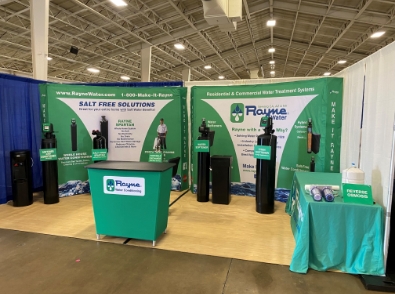
Answer a few questions and find the perfect product for your needs.
Start questionnaire
Answer a few questions and find the perfect product for your needs.
Start questionnaire
Answer a few questions and find the perfect product for your needs.
Start questionnaireAuthor: Ken Christopher | 4 min read | Sep 04, 2025
Testing your water for iron is crucial for ensuring the safety and quality of your drinking water. High levels of iron can lead to various issues, such as unpleasant taste, staining, and clogging of pipes. This guide outlines how to effectively test for iron in your water and explore solutions like water softener systems and iron filtration systems for well water.
Iron is a naturally occurring mineral found in soil and rocks. It can enter your water supply through groundwater or pipe corrosion. While small amounts of iron are generally safe, excessive concentration can indicate a problem.
Regular water testing helps in identifying contaminants, preventing damage to appliances, and ensuring the health of your family. Testing your water for iron can help you determine if you need a whole house water filter system or a dedicated iron filtration system for well water.
Select a reliable water testing kit that checks for both ferric and ferrous iron levels. Most kits include instructions that outline the steps to perform the test.
Determine if the iron concentration exceeds the acceptable limit of 0.3 parts per million (ppm). Higher levels might necessitate treatment solutions like an iron filtration system for well water or a suitable water softener.
If you’re consistently facing hard water issues, consider installing the best water softener for hard water. Softening the water can help in reducing iron levels and improve its overall quality.
For high iron concentrations, a specialized iron filtration system for well water is the most effective solution. This system effectively removes iron while ensuring your water remains safe and clean.
Depending on your needs, you may also explore:
Using a professional water testing kit is the most effective method for accurately measuring iron levels in your water supply.
Iron can enter the water supply through groundwater sources, especially in areas with high iron content in the soil or due to corrosion in pipes.
Elevated iron levels can lead to unpleasant tastes, staining on sinks and laundry, and may cause clogging in plumbing systems.
Testing your water for iron is essential for maintaining quality and safety. With various solutions available, including water softener systems, reverse osmosis drinking water systems, and dedicated iron filtration systems, you can effectively address iron contamination. If you are experiencing issues, consider contacting Rayne Water for professional consultation and installation.
Ken Christopher is the Senior Vice President for Rayne Dealership Corporation. As a seasoned executive with over 20 years of leadership experience, he’s helped scale…
Subscribe our newsletter to receive the latest news and exclusive offers every week. No spam.